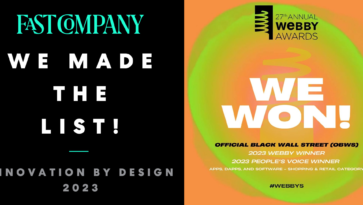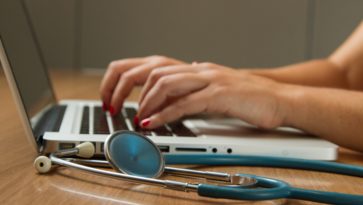This article was originally published on Healthcare Business & Technology.
Thanks to changing healthcare regulations, shifting payment models, and a proliferation of mobile and web applications connecting caregivers and patients, healthcare has become a hotbed for innovation. In particular, the use of mobile apps in healthcare has skyrocketed. According to a 2014 report by MedData Group, more than 10,000 apps are available in the healthcare category, and 75% of physicians use mobile to keep costs down and care quality up.
Yet mobile technology’s nascent adoption in the healthcare space has provided only hints of its power to improve quality of care, and its true business value is far from realized. Inevitably, mobile and web applications will change the industry, in ways many have imagined and no one could have predicted.
For now, here are five areas where technology adoption will continue to be particularly transformative:
1. Individualized data collection and monitoring
The tremendous popularity of wearables like Fitbit has turned personal health maintenance into a social activity and has given individuals the power to take health monitoring into their own hands. Applications such as HexCare aggregate the data acquired by these wearables into an intuitive dashboard, giving people accurate snapshots of their health that they can share with healthcare practitioners and friends alike. From a broader medical perspective, the aggregation of individual data enables more detailed research studies, furthering our collective knowledge base.
The impact of advanced monitoring can’t be overstated, as a physician’s ability to intervene remotely at a critical moment can mean the difference between life and death for patients struggling with obesity, heart disease and even depression. Likewise, mobile apps coupled with in-home monitoring devices have been used to track the wellness of infants with congenital heart defects and to help older patients manage diabetes.
These tools are becoming less expensive and more user-friendly. As more caregivers and patients use them, they’ll help keep countless people from undergoing costly medical treatments as a result of missed warning signs.
2. Remote post-op care
Mobile apps are drastically improving the quality and consistency of treatment – and thus the chances of positive outcomes – during post-surgical care. In fact, with heart failure as the leading cause of 30-day readmissions, and readmission penalties representing a potentially significant financial burden for many hospitals, “medical concierge” apps make a significant difference. These apps can help ensure patients follow through with their prescribed recovery plans. Doctors and nurses can gather data on everything from heart rate patterns to weight fluctuations and intervene if patients revert to the lifestyle and nutrition habits that led to their conditions.
Given the financial incentive for hospitals, post-visit care will expand dramatically through modern mobile and web applications and will further transform healthcare in the coming years.
3. Companions for mental health patients
Mobile app developers are providing patients and caregivers in the mental healthcare space with increasingly creative and valuable solutions. For example, patients with obsessive-compulsive disorder can download mobile and wearable applications that effectively serve as self-service personalized companions when therapists aren’t around, helping them control their obsessions and guiding them through exercises to manage their conditions. Therapists can use the data these apps collect to further customize and improve patients’ treatment plans.
Similarly, apps such as Pacifica work to combat depression using an approach called cognitive behavioral therapy, which focuses on replacing negative thoughts and related emotions with more positive thoughts as part of a progressive framework.
While neither of these apps is designed to replace the support of an actual therapist, both allow for additional self-administered support when necessary and greatly bolster the “traditional” therapist model. The growth in awareness and reduction in stigma around mental-health issues will most certainly lead to continued innovation in the mental health app space, given the millions of people who face mental illness.
4. Internal operations & knowledge management
Administrators must oversee scheduling and deal with confidential patient data, insurance and the transfers of large sums among multiple parties – all while lives are on the line. Whether it be through modern software-as-a-service products or custom-built platforms, easing internal operations management through technology can significantly improve all facets of operations, cut costs and save more lives.
Quick and immediate access to critical health information and up-to-date industry research studies can now be a single tap or click away. As a result, providers will have access to accurate, real-time information, enabling the best decisions for treatments. As healthcare becomes more advanced and our collective knowledge base expands, it is crucial for healthcare providers to match their systems and processes to this expanding body of knowledge.
5. Communication facilitator
While it may sound strange, using mobile apps and the web helps to humanize healthcare. Care will become a truly interactive 24/7 service, providing people in underserved areas with access to sophisticated care options. The expansion of telehealth solutions not only increases general access to care, but also improves the care’s speed and quality.
Expanding communication between patient and caregiver – and even caregiver and caregiver – adds a layer of friendliness to healthcare facilities. An emphasis on connectivity between patient and caregiver increases quality of care and patient satisfaction, which in turn encourages patient retention.
Understanding the legal limits of sharing information and providing remote consultation will be a challenge in developing the expanded use of mobile and web applications in healthcare, but every success will be monumental if it’s inclusive.
So regardless of your stance on mobile devices, it’s hard to ignore the world of opportunities these devices open up for forward-thinking healthcare organizations. The wealth of contextual data they provide, along with their powerful cross-system integrations and remote access to patients, providers and operators alike, have given a glimpse into the brave new world of healthcare, which soon may look nothing like the old.









